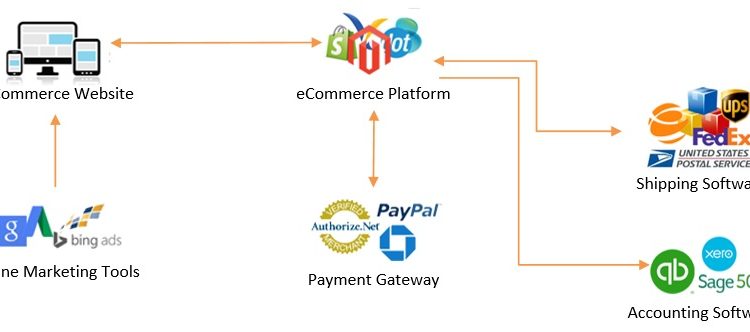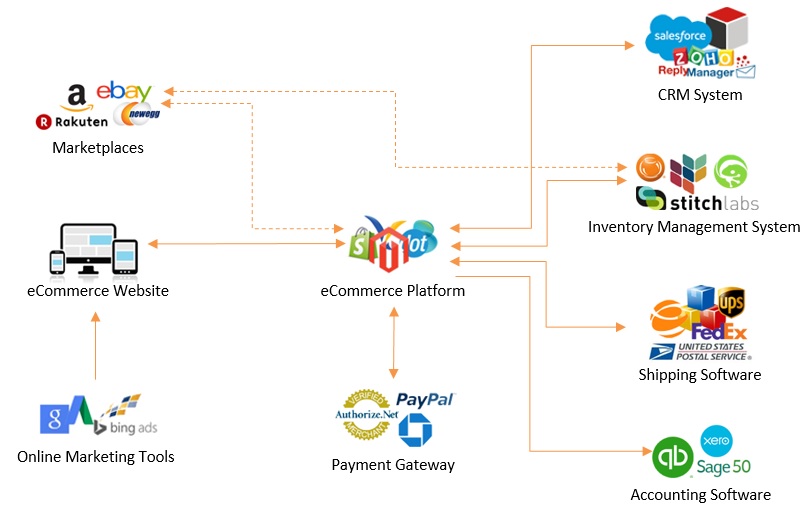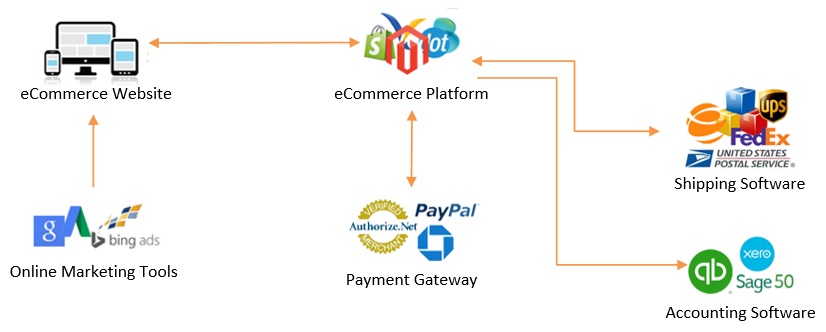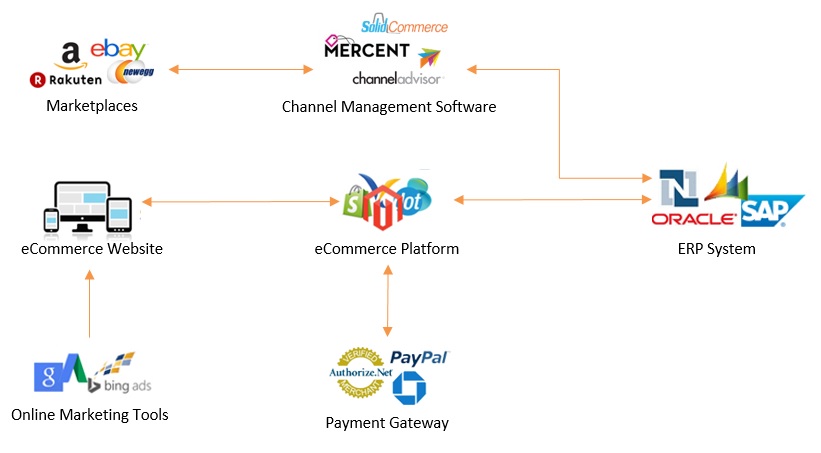
Almost everyone in the world knows of the term eCommerce, but what exactly does that term mean? When you hear the word eCommerce, what comes to mind? For most people, they probably immediately think Amazon or Target.com. Others might think, eCommerce refers to any website that sells products online. Although that is partly true, eCommerce is so much more. By definition, eCommerce just means electronic commerce (selling online). So what does it mean to sell online? Before we can dive into the deeper question of what does it mean to sell online, we first need to identify the tools involved in selling online. This is where an eCommerce ecosystem comes into play.
By definition, an ecosystem is a community of living organisms (plants, animals and microbes) in conjunction with the nonliving components of their environment (things like air, water and mineral soil), interacting as a system.
Therefore, an eCommerce ecosystem is the complex network or interconnected systems that make up an eCommerce business. So what does that look like?
Example of a mid-size company eCommerce ecosystem
Typically, an eCommerce ecosystem is made up of the following components:
- eCommerce Platform
- Online Marketing
- Payment Gateway
- Accounting Software
- Shipping Software
- Inventory Management System (IMS)
- Customer Relationship Management (CRM)
- Marketplaces
- Enterprise Resource Planning (ERP)
- Channel Management Software
This doesn’t mean every eCommerce business uses all of the above tools, but they will use at least a few of them. An eCommerce ecosystem can look different based on the current stage of the eCommerce business. Companies that are just getting started usually only care about gaining new online sales. Therefore, the focus is just on acquiring new customers, selling and accounting for those new sales. The biggest mistake I see time and time again for companies that are just getting started with eCommerce is not doing their homework when choosing an eCommerce platform. It isn’t just the features that matter, it is also how well the platform works with your existing systems and how scalable the platform is for the future.
Example of a small size company eCommerce ecosystem
Ironically enough, medium size companies have the most complex eCommerce ecosystems because they are usually trying to integrate multiple systems to create a seamless operational flow. Enterprise level companies can usually afford an ERP system which allows them to integrate with just one system. Just keep in mind that an integration with an ERP system is much more complex than an integration with a stand alone system because a lot more data needs to flow in and out of that single system.
Example of an enterprise level multi-channel eCommerce ecosystem
Please keep in mind that the above eCommerce ecosystems are just typical examples, I didn’t even include a POS systems for companies that also sell in the retail environment because adding that opens up a whole can of worms, the flow chart can get a lot more complex. My point is all of this is to make sure you walk away understanding that you have to design your eCommerce ecosystem with all pieces of the puzzle in mind, not just the website.
- COVID-19 Has Forced Many Business To Ask, How Do I Start Selling Online? - May 25, 2020
- Applying AI Technology To Taco Bell - January 25, 2020
- ONWARD 2018 Taco Bell Brand Award - November 11, 2018





One Response
[…] opportunities with considerable growth revenue potential. With the evolution of the mobile apps, an eCommerce ecosystem has dramatically accelerated sales via a user-friendly approach that’s exceptional. Now, users […]
Comments are closed.